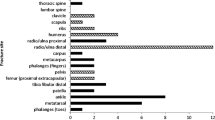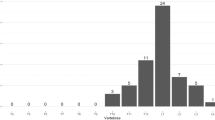Abstract
The purpose of this study was to examine the relationship between bone mineral density (BMD) and survival in both sexes and to compare BMD with other established risk factors such as blood pressure and cholesterol. A population-based prospective study of 1924 individuals (850 men, 1074 women) was performed in Göteborg from 1980 to 1983. Measurements of BMD were obtained in 1468 (76%) of the participants (653 men, 815 women). This selection of individuals generated 10,965 person years, and death was registered for 289 men and 197 women in the 7-year period (2661 days) after bone mineral measurement. Later information on date of death was obtained from the official population register. This information covers 7 years from the time of survey of the last examined participant (in Dec. 1983). At the beginning of the study, BMD was measured in the calcaneus by dual photon absorptiometry (DPA), and blood pressure, serum cholesterol, serum triglycerides, and body mass index (BMI) were also recorded. The study was coordinated with the National Register of Causes of Death and the National Cancer Register. A modified version of the Cox proportional hazards model was used to calculate and determine the age-adjusted relations between nontrauma mortality and BMD. When the various quartiles of BMD were compared prospectively from 70, 75, and 79 years of age with survival figures during the 2661-day follow-up period, the first and the second quartiles with the lowest BMD at entry showed the lowest survival rate in both men (P= 0.01) and women (P= 0.01). A decrease of 1 SD of BMD in a univariate analysis was associated with a 1.39-fold increase in mortality in both men (95% confidence interval 1.25–1.56, P < 0.001) and women (95% confidence interval 1.22–1.58, P < 0.001), and a multivariate analysis demonstrated a relative risk of 1.23 (95% confidence interval 1.10–1.41, P < 0.001) in men and 1.19 (95% confidence interval 1.02 to 1.39, P= 0.019) in women. All relations were adjusted for sex, age, and follow-up. This study indicates that BMD is a predictor of survival, especially for subjects over 70. Bone mineral density was found to be a better predictor of death than blood pressure and cholesterol. This study indicates that, after adjustments have been made for diseases, low bone mass is an independent predictor of mortality and might be a marker of general health or functional aging. Its measurement might therefore be a valuable tool in general health investigations.
Similar content being viewed by others
Author information
Authors and Affiliations
Additional information
Received: 26 December 1996 / Accepted: 27 January 1998
Rights and permissions
About this article
Cite this article
Johansson, C., Black, D., Johnell, O. et al. Bone Mineral Density Is a Predictor of Survival. Calcif Tissue Int 63, 190–196 (1998). https://doi.org/10.1007/s002239900513
Published:
Issue Date:
DOI: https://doi.org/10.1007/s002239900513




